Countdown has already begun and only two days are left before Nobo Borsho or Poila Boisakh! I know many of my Bengali friends have already finalized their ‘especial’ menu to celebrate the 1stday of Bengali New Year with complete ‘Bangaliana’ (Bengali tradition). But I’m sure there are still few who haven’t even thought of it yet just like me or still searching for the suitable menu for that special day. For a late riser like me breakfast never comes before 12 pm. So, I don’t even count on me to maintain tradition on these days. But here are you guys who won’t waste your days on sleeping. So, for you guys I gave little effort and prepared a complete menu card for the Poila Boisakh; breakfast to lunch to snacks and dinner. Ofcourse I included dessert also. I know none of our meal is complete without dessert.
Before we go to the menu here is little information on Poila Boisakh for our non-Bengali friends who doesn’t have any clue about it. Poila boisakh is the 1st day of Bengali New Year. It is celebrated around mid-April; specifically either on 14th or 15thof the month. On this auspicious day everybody wears new dresses and exchange gifts and wishes among friends and families. Guests are greeted with sweets and snacks. And bengalees being known for their love of food the traditional preparations are the best attraction of this celebration.
By maintaining the tradition I’m helping you guys to decide your menu and also to help you on your homework before the grand spread.
You can also visit my youtube page for a list of poila baisakh special videos.
Breakfast:
Phulko Luchi (Video Recipe)
Hing Morich er Alu Chochori (Video Recipe)
Koraishutir Kochuri & Alur Dom (Video Recipe)
Luchi & Alur Torkari
Hing Morich er Alu Chochori (Video Recipe)
Koraishutir Kochuri & Alur Dom (Video Recipe)
Luchi & Alur Torkari
Lunch:
Rice:
Ilish Polao/Hilsa Pulao (Video Recipe)
Bhoger Khichuri (Video Recipe)
Veg:
Fish:
Chicken:
Chicken Bharta Kolkata Style (Video Recipe)
Mutton:
Snacks:
Veg:
Non-Veg:
Dip:
Dinner:
Rice:
Ilish Polao/Hilsa Pulao (Video Recipe)
Ruti/ Porota:
Eggless Tawa Naan (without Yeast Tandoor) (Video Recipe)
Veg:
Mutton:
Dessert:
Doi/Mousse:
Mishti:
Kesar Pista Kulfi Ice cream Sandesh (Video Recipe)
Muger Laddu or Moong Dal Laddoo Bengali style (Video Recipe)
Nolen Gurer Payesh
Pesta Butterscotch Sandesh (Pistachio Butterscotch Fudge)
Aam Sandesh (Mango Sandesh)
Nolen Gurer Payesh
Pesta Butterscotch Sandesh (Pistachio Butterscotch Fudge)
Aam Sandesh (Mango Sandesh)
Subho Noboborsho to All of You 🙂

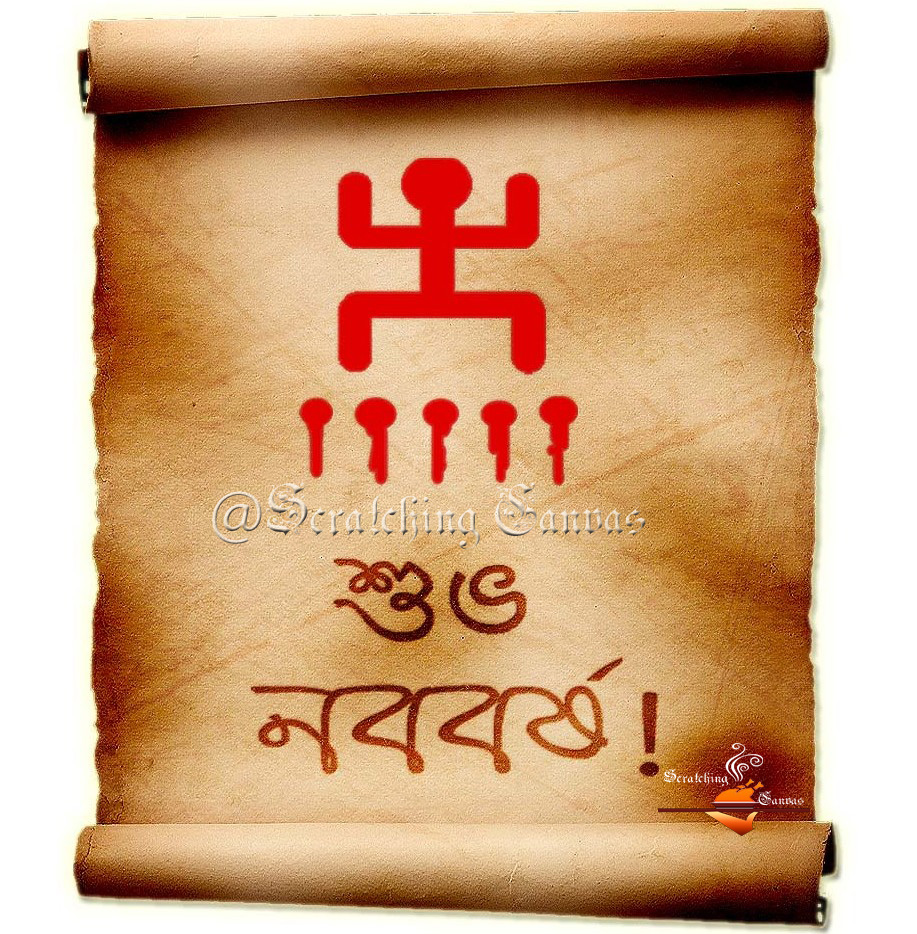
 Subscribe
Subscribe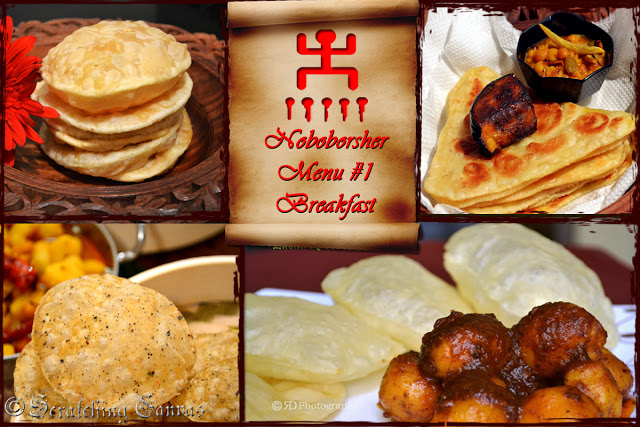
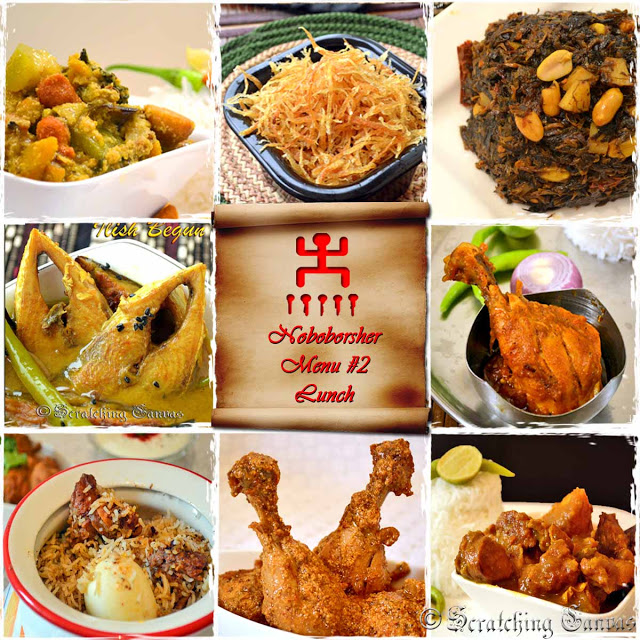
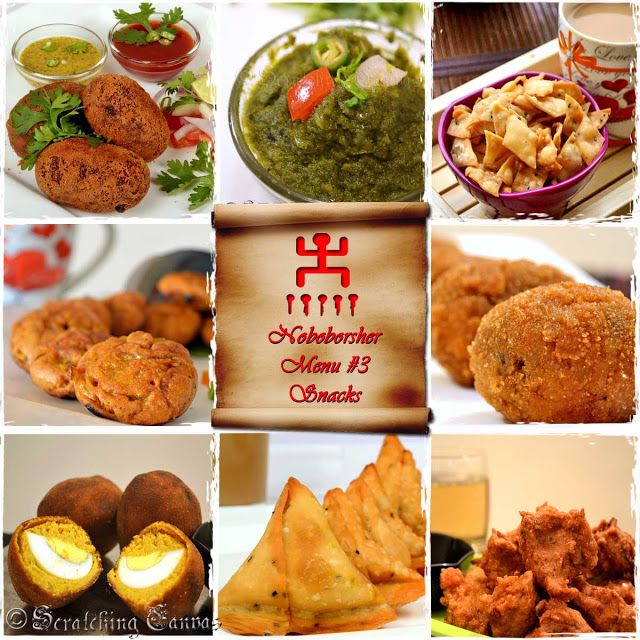
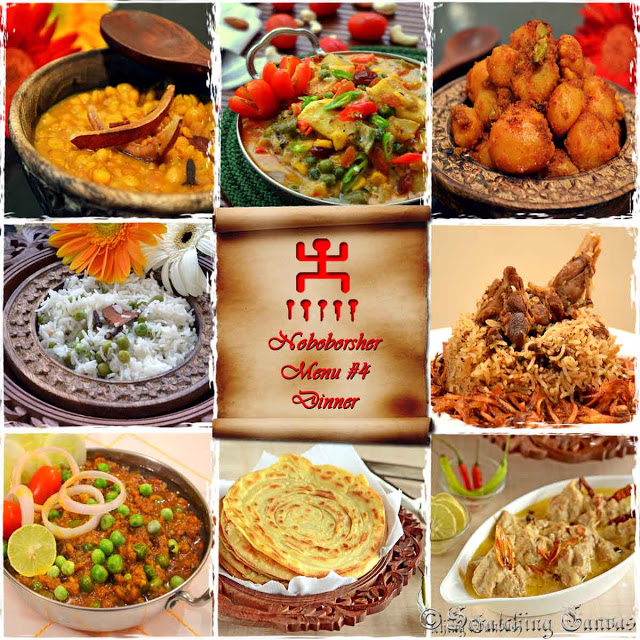
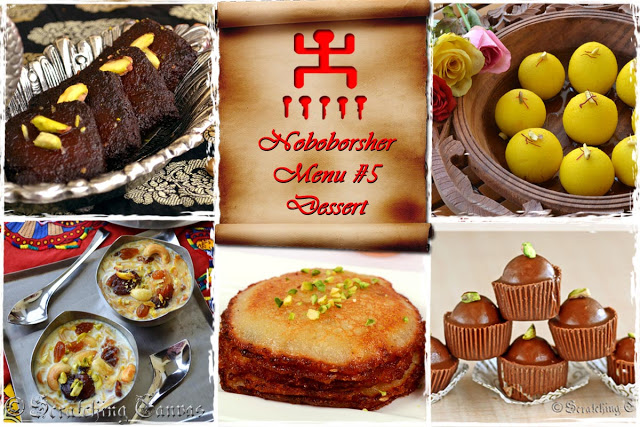
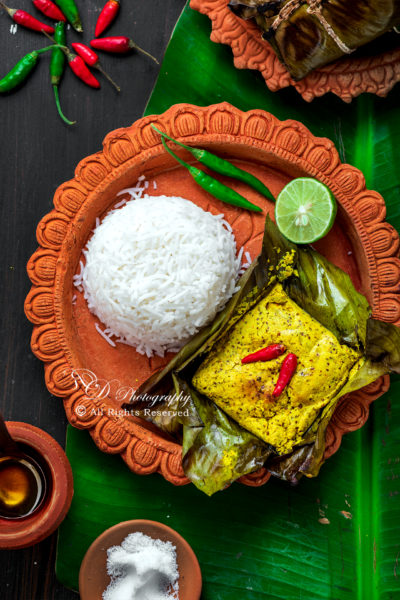
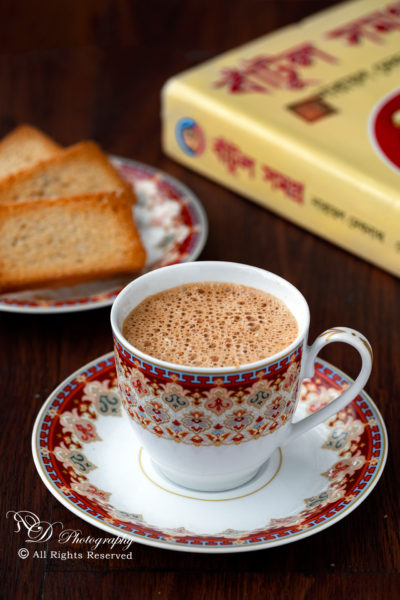
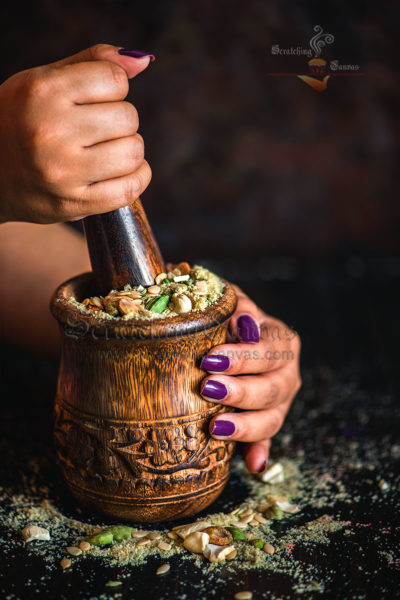
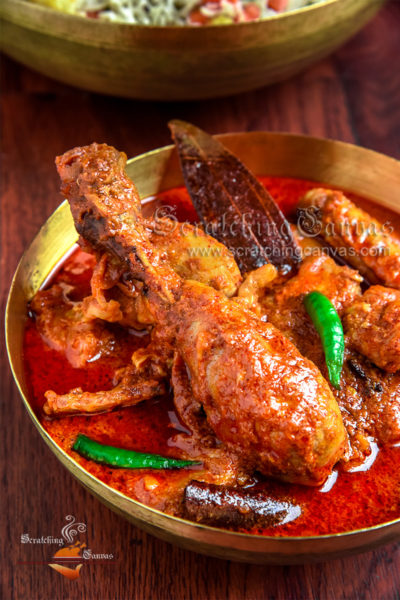
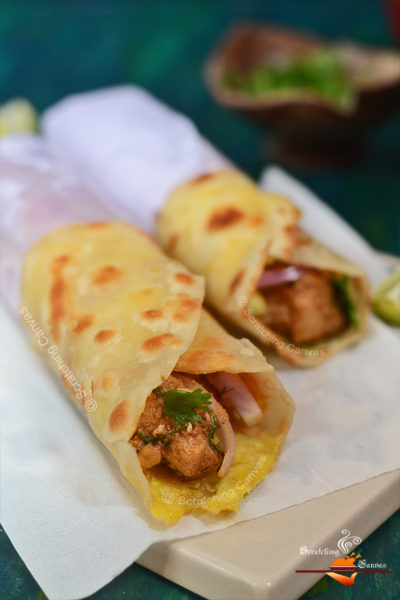
Thank you so much for this page! Our Girl Scout Troop is presenting Bengali New Year at our World Thinking Day event. The dish we bring will probably come from your page.
Can I ask a question? What does the red man-shaped symbol represent?
Thank you again!
Hi Jen, I'm glad you selected this page for your event. Back to your query, the 'red man shaped symbol' is a variation of Swastika. Swastika is the symbol of auspiciousness in Hinduism, Buddhism, and Jainism. Bengali Hindus (people from Bangladesh & eastern part of India) use this symbol instead of the common one.